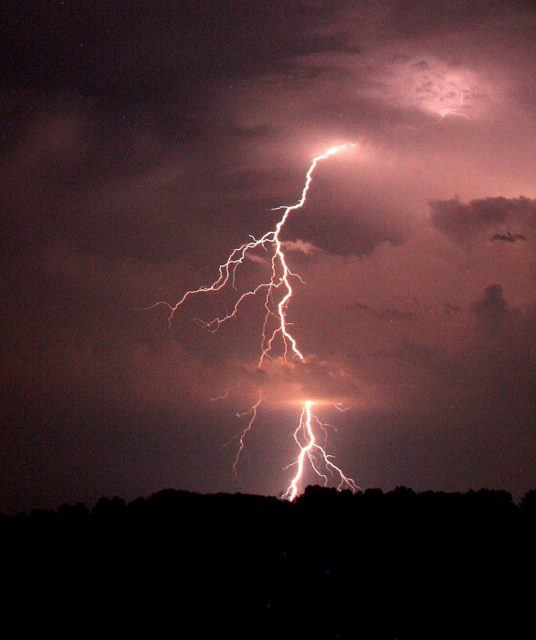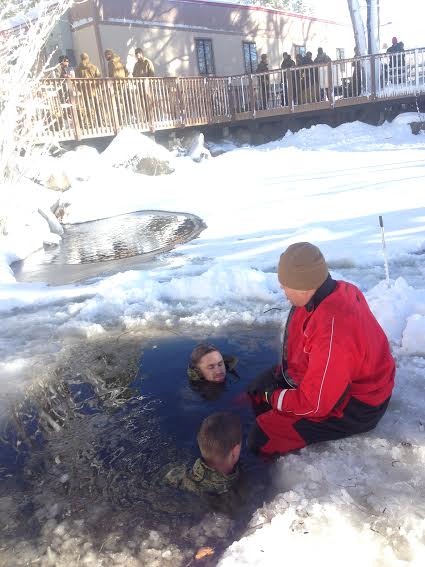Survival – the science behind it & busting a few myths
Things like bear and the occasional beaver attacks seem to get most of the attention, but it’s the threats that are the most predictable and pose the biggest of threats that people tend to overlook.
If you spend enough time outdoors, there is a very possible risk that you or your friend could suffer from heat stroke or hypothermia. Below are four of the outdoors’ most likely and dangerous threats, how to avoid them, and what to do when they happen.
Heat Stroke
Heat is always treated as a nuisance instead of the threat that it is in any sports or outdoor activities. Cycling races happen no matter what the temperature is, runner race on 110-plus degree days, both can be very dangerous mistakes. Sometimes, the most experienced athletes, record-breaking athletes can be taken down by heat stroke, as endurance racer Michael Popov did when he died in Death Valley, California during a solo six mile run in 120-degree heat.
Some of the problem is determining the difference between heat stroke, which can kill, from its milder relative, heat exhaustion. The symptoms are not all that different to the untrained eye, says Dr. Douglas Casa, COO of the Korey Stringer Institute at the University of Connecticut.
The majority of the symptoms are alike: slowed performance or weakness, muscle cramps, collapse, nausea, and headache being the most common. Central nervous system dysfunction-irrational behavior, irritability, emotional instability-and a rectal temperature greater than 104 degrees, all are most definitely difficult to determine in the field, these are the differences for heat stroke. Making it more difficult, heat stroke can happen when it is entirely expected, like on milder days, if athletes don’t get enough fluids or are out of shape.
What Happens: You create more heat than you can use up. “Your core temperature gets so high that your cells are damaged,” says Casa. “Organs like the kidney, brain, and liver start to malfunction. If the body is above 105 degrees for more than 30 minutes, that’s when you run the risk of permanent complications or death.”
Signs and Symptoms: Symptoms like crazy behavior can be a sign, “rectal temperature is really the only way to be sure that the reason they’re having CMS dysfunction is due to heat stroke and not due to some other reason,” says Casa.
Prevention: Do not exercise in serious heat and drink plenty of fluids if you are not properly acclimated.
Treatment: “Cool the person as quickly as possible, and as soon as possible, usually with whole-body ice immersion,” Casa says. “If that’s not possible, use rotating cold, wet towels to cover as much of the body as possible.”
The Myths: Ice baths are not good for you. If you are hydrated, you are safe. You stop sweating.
The Reality: Ice is good, says Casa. “There used to be people thinking that cold water immersion is actually not good because you’d shiver or have peripheral vasoconstriction,” he says. “They’re wrong. Heat stroke victims keep sweating. It can occur before you have time to become dehydrated.”
The Bottom Line: You have 30 minutes to get your temperature regulated. Do whatever you have to and make that happen. Cool down first, then go to the hospital.
Lightning Strike

Lightning strikes kill on a regular basis even though it sounds like a freaky way to go. Over the last 30 years in fact, the injuries caused by lightning trail behind only flash floods and tornadoes as the leading cause of storm-related deaths in the U.S. Are you worried about earthquakes, hurricanes, or super-volcanoes? According to the National Weather Service, lightning kills more people every year than all of the other threats combined.
You know what the good news is? 90% of lightning strike victims do survive, though the chances always depend on the kind of strike. A direct hit is most likely fatal. But a ground strike (when the current travels through the ground), side splash (when the current jumps to the victim from a nearby object), and contact (when the victim is touching an object that was struck) are all survivable.
What Happens: “You’re in a channel,” says Dr. Katie Walsh, an expert on lightning and director of East Carolina University’s athletic training program. “A charge comes up from the ground and down from the sky at the same time. Anything that’s in its path it will go through. Typically, your heart stops. Then you stop breathing. If your heart doesn’t stop, you feel this big giant buzz.” And if you survive, that doesn’t necessarily mean you’re in the clear. “It’s almost like the concussions where people don’t ever really feel 100 percent again—your brain changes or you have neurological tingling or don’t sleep well,” says Walsh. “Your whole life is changed. The majority struggle. They’re short-circuited.”
Signs and Symptoms: Normally, the signs of a lightning strike are pretty self-evident but they can be misleading. “We have found people naked and dead because they were sweating,” says Walsh. “They were hiking, lightning hit them and blew their clothing off. People think it’s an assault. It’s not.”
Prevention: Be proactive, stay away from water, open spaces, high ground, and solitary. “Don’t just check the weather, talk to a local who can say, be up by noon and back by two,” says Walsh. “A local will know that, say, around three every day a storm rolls in.” If you’re trapped in the storm, make your way to safety as quickly as possible. Your best bet is a building or car. Short of that, squatting in a densely forested area or hiding deep in a cave is best.
Treatment: If the victim’s heart has stopped, perform CPR. If not, get them to the hospital.
The Myth: If lightning hits the ground near you, you should be safe. If you are not wet, you’ll be fine. Strike victims are erratic and hard to handle.
The Reality: You need to be in an actual building or a car. Just because you are not wet, doesn’t mean you are safe. If lightning hits the ground, you are not safe, it will spread across the ground and can hurt you if you are close enough. Victims of a strike are perfectly safe to touch.
The Bottom Line: Plan ahead, and “if you can hear thunder, you should be running,” says Walsh.
Hyponatremia
In the past, you were told when you ran you weren’t supposed to drink. Then they said you were only supposed to drink every chance you got. And now experts say to only drink when you need to. What gives?
Hyponatremia is also called water intoxication. It became more widely known after a woman competing in the “Hold Your Wee for a Wii” contest held by a radio station died after drinking way too much water in a short amount of time.
And while it might seem like over-hydration is something only Darwin Award competitors need to think about, it is a real threat for a certain type of outdoor enthusiast: the recreational athlete, says Dr. Douglas Casa, COO of the Korey Stringer Institute at the University of Connecticut. “Elite athletes aren’t the ones getting hyponatremia,” he says. “An elite marathoner doesn’t have the time to overdrink. You see it in the recreational person who stops at every aid station.”
What Happens: You are drinking too much water over a period of time, and for some reason your brain decides that you are
Dehydrated and stops making urine. Your body keeps sweating, but it is not enough. Then, your tissues become bloated, the brain swells and pushes up on the skull cutting off your blood flow. If the swelling affects the part of your brain that controls your breathing, you’re done for.
Signs and Symptoms: Headache, nausea, vomiting, bloating, altered mental status.
Prevention: If you’re not thirsty, don’t drink. “For recreational athletes, drink to your thirst,” says Casa. “Not beyond it. And for elite athletes, develop a hydration plan.”
Treatment: Eat salty foods, drink less water, consume oral hypertonic saline.
The Myth: Water intoxication can only happen when you exercise. It is not possible to over-drink water because you will pee it out.
The Reality: You could always over-drink. Hyponatremia can happen just hours after exercise if the sodium you expend is not replaced.
The Bottom Line: If you’re not thirsty, don’t drink.
Hypothermia

Hypothermia comes with a very sick and twisted history. Some literature cones with baggage: Disturbingly inhumane tests were performed on prisoners of war during the Holocaust showing fair amounts of what scientists and doctors know. Also, the shear fear of freezing to death is so linked to mountaineering and Arctic exploration that people often do not take the risks seriously.
Just exactly how big a risk is hypothermia for an outdoor athlete? Not a tremendous one if you don’t run any risk factors. Dr. Thomas Cappaert who is an expert in cold weather safety at Central Michigan University says: only one to three incidents of hypothermia result from every 1,000 exposures to cold weather. If you are exercising on land with a fair amount of clothing on, you are probably OK: you will feel the cold and turn back before you get into serious trouble.
Unless you don’t. Outdoor athletes have a tendency to ignore their perception of cold, says Cappaert. “If you want to go hiking, you accept that it’s cold and ignore the psychic impulse,” he says. “When you do that repeatedly, the impulse becomes weaker. And you ignore the symptoms until you cannot react.”
What Happens: Your body starts to cool down faster than you can produce heat. Then you are dropping below the temperature from which your body can recover. Things such as shivering and your other defenses cannot handle the change. When your body begins to become too cold, your organs shut down, Outside Online reported.
Signs and Symptoms: Watch out for the umbles: “You start to stumble, mumble, bumble, and grumble,” says Cappaert.
Prevention: Always be prepared for the weather to change, carry extra layers of clothing and food, and listen to your body.
Treatment: “Keep moving and seek out some sort of shelter,” Cappaert says. If you’re with someone, try to share body heat by huddling together. And if you have food, eat it: metabolizing fuel generates heat and “fills your carbohydrate stores so you have the energy to keep shivering. “After you get inside, use passive rewarming and focus on the trunk if you have a hot bottle. If you have frostbite, wait to get out of the cold before slowly warming the tissue under hot water: refreezing thawed-out fingers and toes can cause extra damage.
The Myth: Liquor can help warm up a hypothermic person.
The Reality: Liquor causes blood vessels to dilate, increasing heat loss.
The Bottom Line: Hypothermia is not a joke. Dress warm and listen to your body.





